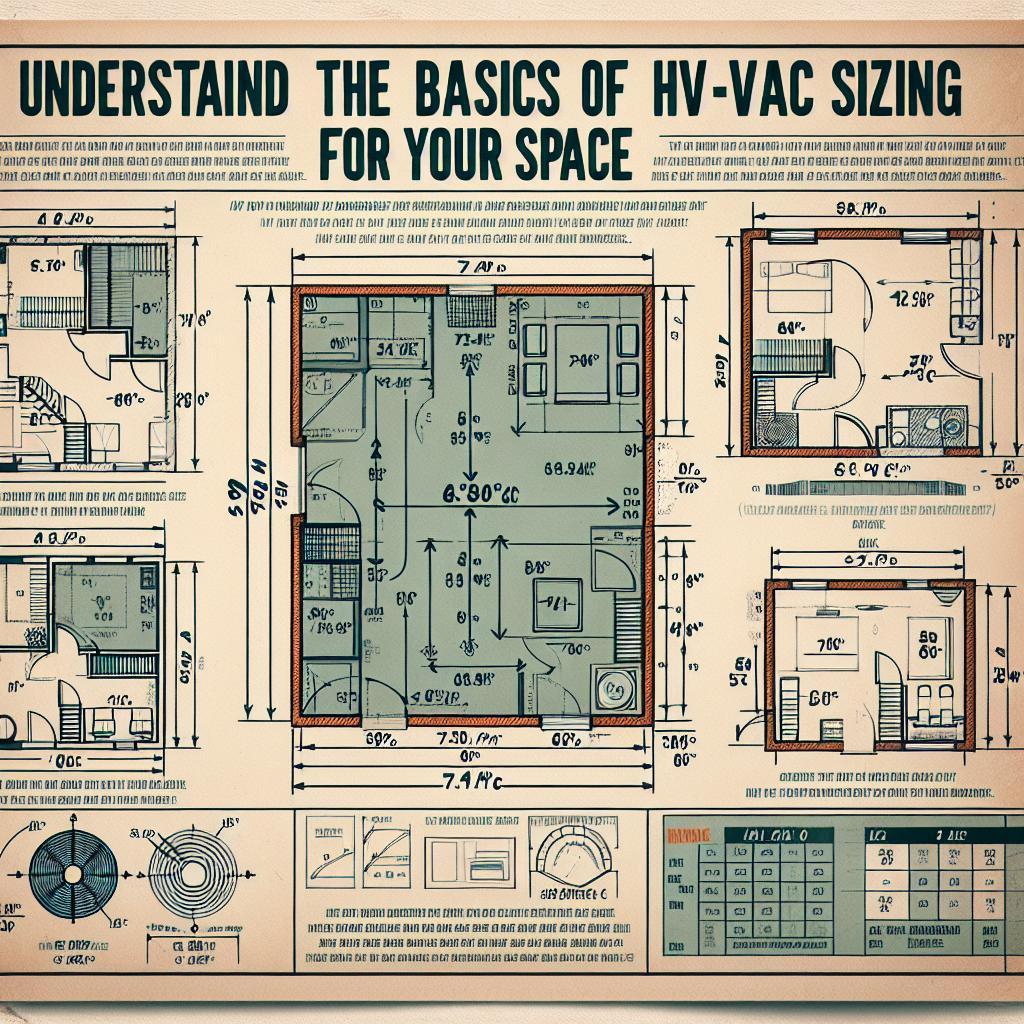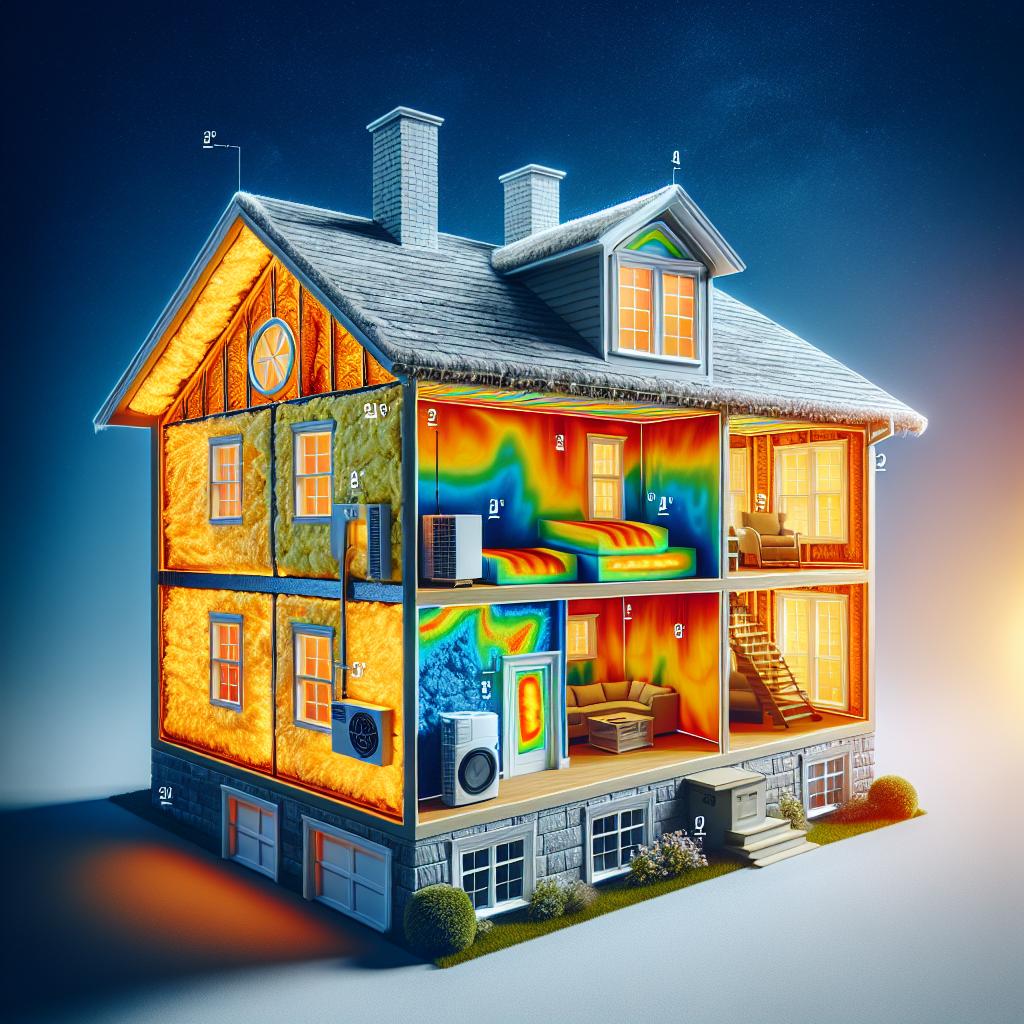When the sweltering heat of summer or the biting chill of winter sets in, the comfort of your home relies heavily on one crucial component: the HVAC system. However, achieving that ideal indoor climate hinges not just on the use of a heating, ventilation, and air conditioning unit, but on choosing the right size for your specific space. An undersized unit will struggle to keep you cozy, while an oversized system can lead to inefficiencies and increased energy bills. So, how do you determine the perfect size for your home’s HVAC needs? In this article, we’ll unravel the essentials of HVAC sizing, breaking down the key factors to consider, calculating your requirements, and helping you ensure that your home remains a sanctuary, no matter the season. Let’s embark on this journey to find the right fit for your comfort and energy efficiency.
Understanding the Basics of HVAC Sizing for Your Space
Determining the right size of your home’s HVAC unit is vital for maintaining a comfortable indoor environment. An oversized unit can lead to inefficient energy use, while an undersized one results in inadequate heating or cooling. Start by calculating the square footage of your space, which can be done by measuring each room and multiplying length by width. Once you have the total area, consider the following factors that influence your HVAC needs:
- Ceiling Height: Higher ceilings require more powerful units.
- Home Insulation: Well-insulated homes can maintain temperature better.
- Window Size and Type: Larger or less efficient windows can increase heating and cooling demands.
- Climate: Local weather conditions play a significant role in your HVAC requirements.
Once you’ve collected this information, you can use BTUs (British Thermal Units) as a benchmark for your HVAC size choice. A standard calculation involves determining the BTUs required for your home based on both the square footage and the specifics previously mentioned. Below is a simple reference table to guide your estimates:
| Area (sq. ft.) | Recommended BTUs |
|---|---|
| 0 – 500 | 5,000 – 6,000 |
| 500 – 1,000 | 7,000 – 10,000 |
| 1,000 – 1,500 | 12,000 – 15,000 |
| 1,500 – 2,000 | 18,000 – 25,000 |

Identifying Key Factors That Influence HVAC Unit Size
When determining the appropriate size for your HVAC unit, several key factors come into play. One of the most critical elements is the square footage of your home. The larger your home, the more powerful your HVAC system needs to be. However, it’s not just about the area; the layout and design of your space also significantly influence heating and cooling needs. Homes with high ceilings or open floor plans may require different considerations compared to more traditional layouts. Additionally, features such as large windows, skylights, and insulation type can affect the overall climate control within your home.
Another essential factor is the local climate. Areas that experience extreme temperatures—whether hot or cold—necessitate larger or more robust systems to maintain comfort. Other considerations include:
- Home orientation: How your home is positioned relative to the sun can greatly impact heating and cooling needs.
- Number of occupants: More people generate heat, which can alter system requirements.
- Type of appliances: Energy-efficient appliances can reduce overall heat generation.
Below is a simple table that illustrates how different factors can affect HVAC sizing:
| Factor | Effect on HVAC Size |
|---|---|
| Square Footage | More area requires larger units. |
| Ceiling Height | Taller ceilings increase volume needing cooling/heating. |
| Insulation Quality | Better insulation may allow for smaller units. |
| Climate | More extreme temperatures require larger systems. |

Evaluating Your Home’s Insulation and Airflow Needs
Understanding your home’s insulation and airflow is crucial to determining the appropriate size of your HVAC unit. Adequate insulation can keep the desired temperature stable, reducing the workload on an HVAC system, while efficient airflow is essential for even heating and cooling throughout the home. To assess your insulation needs, consider the following factors:
- Type of insulation: Inspect areas such as attics, walls, and basements for the type of insulation used.
- Insulation R-value: Check the R-value, which measures insulation effectiveness; higher values indicate better insulation.
- Air leaks: Identify drafts and gaps around windows, doors, and ducts, as these can compromise insulation performance.
Moreover, proper airflow is critical for the efficiency of your HVAC unit. Stagnant air can lead to temperature imbalances and increased energy costs. Regular maintenance, such as cleaning air ducts and ensuring vents are unobstructed, plays a key role in airflow management. You might also want to evaluate your home’s layout to identify any potential airflow hindrances. Consider compiling a brief checklist:
| Airflow Assessment Checklist | Status |
|---|---|
| Check vent blockages | ✔️ |
| Inspect duct system | ✔️ |
| Assess return vents | ✔️ |

Consulting Professionals for Accurate HVAC Calculations
When it comes to determining the right size of your home’s HVAC unit, seeking the expertise of professionals can make all the difference. Experienced contractors utilize specialized software and tools to perform accurate calculations that take into account various factors influencing your home’s heating and cooling needs. These include:
- Square footage: The total area of your home plays a significant role in heating and cooling requirements.
- Insulation quality: Well-insulated homes retain temperature better, affecting unit size.
- Climate zone: The local climate significantly impacts the size and efficiency of the HVAC unit needed.
- Window types: The presence of energy-efficient windows can reduce the energy load.
Moreover, engaging professionals ensures that you are equipped with essential information, including a detailed load calculation often referred to as a Manual J calculation. Such assessments help in understanding required BTUs based on specific criteria. Additionally, comparing unit sizes based on efficiency ratings can lead to substantial long-term savings. Consider the following factors when discussing options with your HVAC expert:
| Unit Size | BTU Rating | Efficiency (SEER) |
|---|---|---|
| 1.5 Ton | 18,000 BTU | 14 SEER |
| 2 Ton | 24,000 BTU | 16 SEER |
| 3 Ton | 36,000 BTU | 18 SEER |
Q&A
Q&A: How to Determine the Size of Your Home HVAC Unit
Q: Why is it important to choose the right size HVAC unit for my home?
A: Selecting the correct size HVAC unit is crucial for efficiency and comfort. An undersized unit won’t adequately cool or heat your space, leading to discomfort and increased energy bills. Conversely, an oversized unit may cool or heat the area too quickly, causing frequent on-off cycling, which can decrease efficiency and lead to wear and tear.
Q: How do I know what size HVAC unit I need?
A: The right size for your HVAC unit is typically determined in BTUs (British Thermal Units) or tons. The general rule of thumb is that you need approximately 20 BTUs for each square foot of living space. However, various factors, such as insulation quality, ceiling height, window size, and local climate, also play key roles. A professional load calculation, ideally performed by a qualified HVAC technician, will provide a more accurate estimate.
Q: What factors should I consider when calculating my HVAC size?
A: Several factors influence the size of the unit you need, including:
- Square Footage: The total area of your home is a starting point.
- Ceiling Height: Taller ceilings mean more volume to heat or cool.
- Insulation Quality: Well-insulated homes retain temperature better.
- Windows: The number, size, and orientation of windows can impact heating and cooling.
- Local Climate: Colder or hotter climates may require different sizing.
- Home Orientation: The direction your home faces can affect sunlight exposure.
- Occupants: More people can increase heat generation in your home.
Q: What’s the significance of SEER ratings in my HVAC selection?
A: SEER (Seasonal Energy Efficiency Ratio) ratings measure the efficiency of your air conditioning unit. Higher SEER ratings indicate better energy efficiency, meaning lower utility bills over time. When determining the size, also consider a unit with an appropriate SEER rating for your climate and usage pattern.
Q: Can DIY calculations help me determine HVAC size?
A: While simple online calculators can provide a ballpark figure based on key factors, they often lack the depth necessary for an accurate assessment. For precise sizing, it’s best to consult a professional who can conduct a detailed load calculation.
Q: Should I consider future changes in my household when sizing an HVAC unit?
A: Absolutely! If you plan to expand your home, add new occupants, or make significant changes, it’s wise to factor these potential changes into your HVAC calculations. A unit that meets your current needs may not satisfy future requirements.
Q: What common mistakes should I avoid when sizing an HVAC unit?
A: Some pitfalls to steer clear of include:
- Overestimating the size needed based solely on square footage.
- Neglecting to account for factors like insulation and window quality.
- Relying on past experience without considering new technology or products.
- Ignoring maintenance needs and local climate trends affecting efficiency.
Q: What’s my next step after I’ve estimated the size of my HVAC unit?
A: Once you’ve both estimated and considered various factors, consult with a licensed HVAC contractor. They can refine your calculations, recommend the right HVAC equipment, and ensure you leave with a unit that keeps your home comfortable while being efficient.
By understanding these fundamentals, you can confidently navigate the selection of an HVAC unit that perfectly suits your living space, enhancing your comfort while managing energy costs efficiently.
Final Thoughts
determining the right size for your home HVAC unit is a critical step toward achieving optimal comfort and efficiency. By considering factors such as square footage, climate, insulation, and the number of occupants, you can navigate the often complex world of heating and cooling systems with confidence. Remember, an appropriately sized unit not only enhances indoor air quality and comfort but also saves you money in energy costs, extending the lifespan of your equipment. Whether you consult a professional or take a DIY approach to your calculations, investing the time and effort to make an informed decision will pay off in the long run. As you move forward, keep these guidelines in mind, ensuring your home remains a haven of comfort, regardless of the weather outside. Happy planning!

